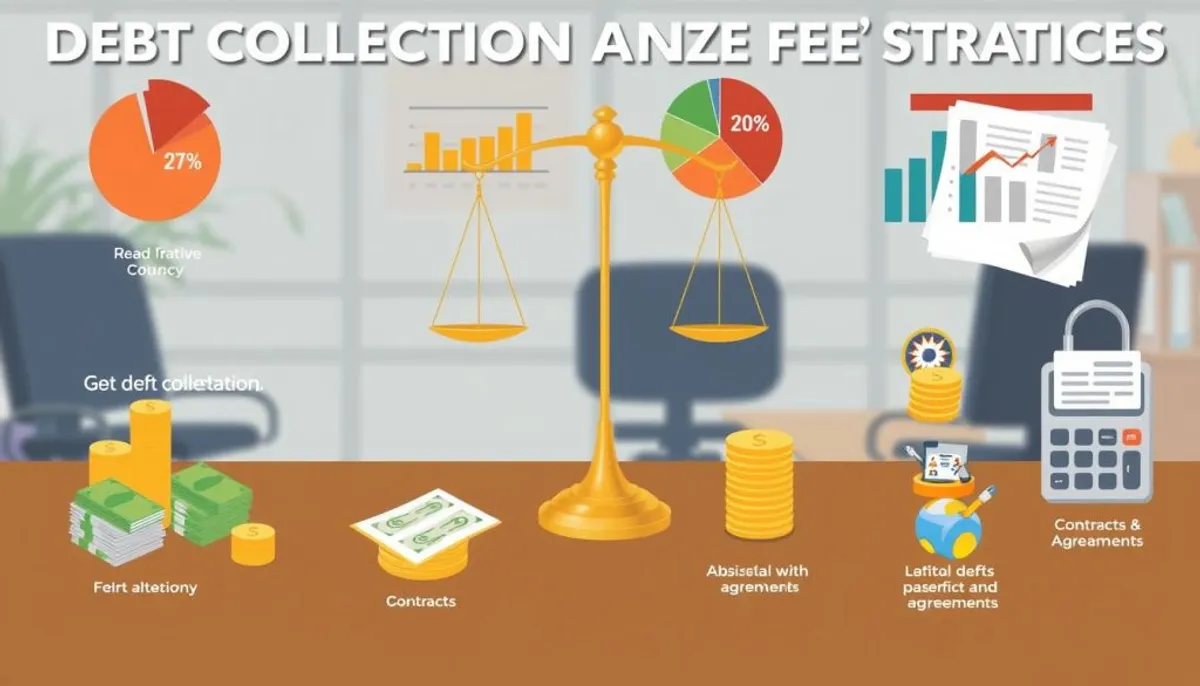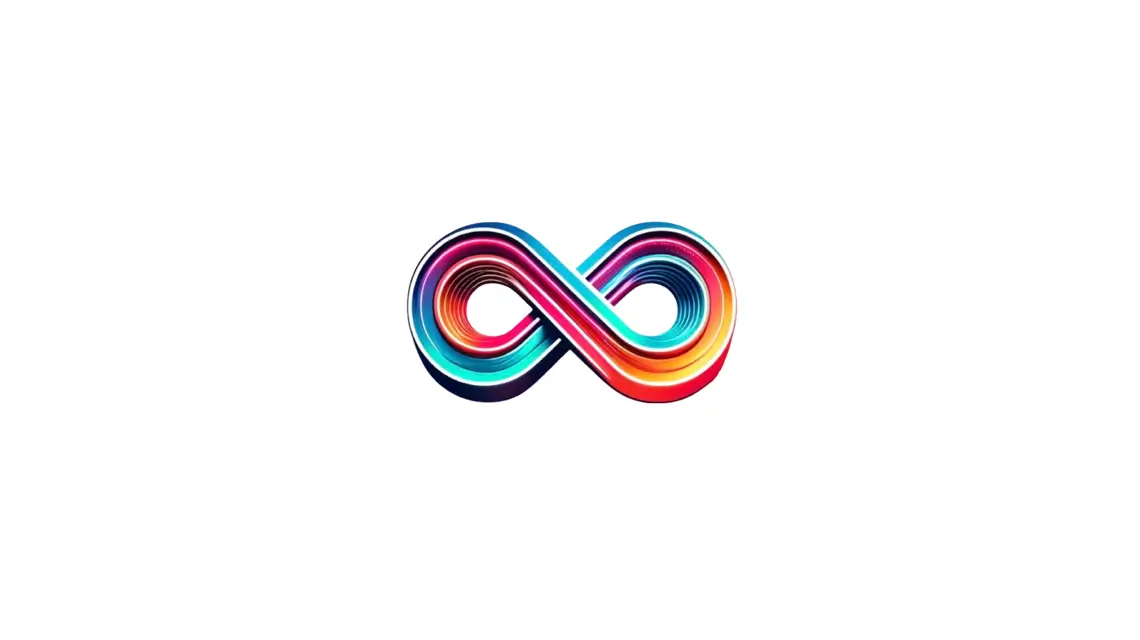Small businesses face a significant challenge in debt recovery. Unpaid invoices can severely disrupt cash flow, emphasizing the need for effective credit management. Many turn to collection agencies as a crucial step in managing accounts receivable.
Consider this: within the first month of debt collection, there’s a 94% chance of retrieving payment. This highlights the importance of acting swiftly when invoices remain unpaid. Empire Credit and Collection, a BBB accredited agency, boasts an impressive 82% success rate on small business debts.

IC System, a veteran in the field since 1938, offers tools to streamline debt collection for small businesses. Their InstiCollect service initiates ethical collection activity within one business day. With a 35% fee on recoveries and a one-time $75 setup fee, it’s an option worth exploring for those struggling with unpaid accounts.
The collection process typically unfolds in three phases: initial contact attempts, involvement of a local attorney, and potential court judgment. It’s important to note that the statute of limitations for debt collection varies by state and type of debt, usually spanning three to six years.
Key Takeaways
- Collection agencies can significantly improve debt recovery rates for small businesses
- Quick action is crucial, with a 94% payment retrieval chance in the first month
- Reputable agencies like IC System offer automated tools to enhance collection efficiency
- The collection process involves multiple phases, from initial contact to potential legal action
- Understanding state-specific statutes of limitations is important for effective debt recovery
Understanding the Impact of Late Payments on Small Business Cash Flow
Late payments are a significant challenge for small businesses, impacting their cash flow and operations. Small and medium-sized enterprises (SMEs) are vital to national and global economies. Yet, they often face difficulties with delinquent accounts and the need for commercial debt collection.
How Delayed Payments Affect Business Operations
Delayed payments create a ripple effect in businesses. SMEs may struggle to pay suppliers on time, leading to strained relationships and potential supply disruptions. Employee morale can also suffer, with some businesses forced to cut staff commissions due to cash flow issues.
The Real Cost of Unpaid Invoices
Unpaid invoices have hidden costs beyond the amount owed. Small businesses often spend valuable time chasing payments, diverting resources from growth-oriented activities. Some resort to increasing product prices to offset late payment expenses, potentially impacting competitiveness.
| Impact | Consequence |
|---|---|
| Reduced Cash Reserves | Limits daily operations |
| Staff Commission Cuts | Employee demotivation |
| Growth Limitations | Inability to fund new projects |
| Postponed Expansions | Delayed business development |
Cash Flow Management Challenges
Managing cash flow becomes complex when facing late payments. SMEs may struggle to maintain sufficient working capital, hindering their ability to take on new projects or acquire necessary resources. To combat this, many businesses are turning to digital solutions:
- Implementing invoice automation software can reduce handling times by up to 90%
- Offering early payment discounts can incentivize timely payments
- Establishing robust credit control procedures helps manage delinquent accounts effectively
For small businesses, efficient debt collection is crucial. Professional commercial debt collection services can help recover funds tactfully, preserving valuable customer relationships while improving cash flow. By addressing late payments promptly and effectively, SMEs can maintain financial health and focus on growth.
When to Consider Professional Debt Collection Services
Small businesses frequently encounter cash flow difficulties due to unpaid invoices. When internal collection efforts prove insufficient, it becomes necessary to engage third-party debt collectors. These experts are adept at recovering lost income and safeguarding your business against credit risk.
Businesses should contemplate professional debt collection services when invoices are 60 to 90 days overdue. This period allows for initial recovery attempts while ensuring prompt action on delinquent accounts.
Indicators that signal the need for professional assistance include:
- Suffering cash flow due to slow collections
- Customers avoiding payment
- Customers unable to pay due to financial issues
Collection agencies provide diverse payment models, such as contingency fees or debt purchasing. They employ sophisticated methods like skip tracing to track down elusive debtors. This expertise is vital in reducing losses and preserving cash flow.
It’s worth noting that 29% of small businesses fail due to cash flow problems. Collaborating with reputable third-party debt collectors allows you to concentrate on your core activities while professionals manage debt recovery complexities. This strategy not only conserves time but also shields you from potential legal perils associated with debt collection.
Collection Agencies Small Businesses: Essential Services and Solutions
Small businesses encounter distinct hurdles in debt collection. Professional collection agencies provide a spectrum of services to aid in recovering unpaid debts and enhancing cash flow. Let’s examine the critical services and solutions available to small enterprises.
Types of Collection Services Available
Collection agencies offer a variety of services, each tailored to meet the specific needs of small businesses. These encompass debt negotiation, skip tracing, and automated payment reminders. Agencies like IC System have specialized programs for businesses with fewer than 50 monthly debts. Their InstiCollect program is crafted to efficiently manage past-due accounts for small businesses.
First-Party vs. Third-Party Collections
First-party collections involve agencies acting on behalf of the creditor, utilizing the creditor’s name. In contrast, third-party collections are conducted independently by agencies. IC System’s Recovery Plus program employs a two-phase strategy, combining letters-only and intensive collection efforts at a competitive flat rate.
Skip Tracing and Advanced Recovery Methods
Skip tracing is a vital service for locating customers who have altered their contact details. Advanced recovery methods employ data analytics and multiple communication channels to enhance success rates. These tools enable the segmentation of debts, prioritization of accounts, and targeted efforts where success is most probable.
| Service | Benefits |
|---|---|
| Debt Negotiation | Improves chances of recovering owed funds |
| Skip Tracing | Locates customers with changed contact info |
| Advanced Analytics | Enhances collection strategies and efficiency |
By utilizing these services, small businesses can notably enhance their debt recovery rates and sustain healthy cash flow. Professional collection agencies offer expertise and resources that significantly impact the effective management of accounts receivable.
Introducing ti3: A Modern Alternative to Traditional Collection Agencies
In the realm of credit management and accounts receivable, small enterprises encounter formidable hurdles. The reality is stark: 89% of small-to-medium-sized businesses report late payments as a significant growth impediment. This necessitates a paradigm shift, introducing ti3, a groundbreaking SaaS platform. It is engineered to streamline the collection process while safeguarding client relationships.
Automated Payment Reminders and Escalation
ti3 harnesses automation to address the arduous task of payment pursuit. Given that 65% of businesses dedicate 14 hours weekly to payment-related administrative tasks, ti3’s automated reminders offer a substantial reduction in this workload. The platform dispatches timely, professional notifications to clients, escalating the urgency as necessary.
Client Relationship Preservation Features
Preserving positive client relationships is paramount during the collection phase. ti3 incorporates features that enable businesses to communicate professionally and empathetically with delinquent customers. This strategy aids in maintaining valuable business connections while enhancing the likelihood of payment receipt.
Cost-Effective Digital Collection Solutions
Traditional collection agencies often come with a hefty price tag, with small businesses investing approximately £5,000 annually to recover late payments. ti3 presents a cost-effective alternative, offering digital solutions that streamline the accounts receivable process. By minimizing manual intervention and eliminating agency fees, ti3 facilitates enhanced cash flow management without financial strain.
With ti3, businesses can confront the challenges of late payments effectively, safeguarding client relationships while bolstering their financial performance. This pioneering platform heralds the future of credit management for small enterprises, providing a more intelligent approach to handling accounts receivable in the digital era.
Best Practices for In-House Collections Before Seeking External Help
Small businesses can manage delinquent accounts and lower credit risk before resorting to external agencies. Establishing clear invoice terms is essential. Include payment amounts, due dates, and penalties for late payments. This clarity prevents misunderstandings and fosters timely payments.
Timely follow-up is critical when dealing with overdue payments. If a payment is late, contact the customer immediately. A polite reminder can often resolve the issue without harming the business relationship. For persistent non-payment, a formal collection letter may be necessary.
It’s advisable to have an attorney review your collection letter before dispatch. This ensures adherence to debt collection laws and safeguards your business from legal complications. The aim is to recover debts while maintaining professional relationships.
- Create clear invoice payment terms
- Follow up promptly on overdue payments
- Send a formal collection letter for persistent non-payment
- Have an attorney review collection letters
By adopting these strategies, businesses can often recover payments without the need for external agencies. This approach not only saves costs but also preserves customer relationships, which is vital for long-term success.
Understanding Collection Agency Fees and Pricing Structures
For small businesses, the realm of debt recovery can be daunting. It is essential to grasp the nuances of collection agency fees to make strategic decisions regarding commercial debt collection. We will dissect the prevalent pricing models and uncover potential hidden expenses.
Contingency Fee Models
Collection agencies predominantly employ a contingency fee model. This approach stipulates that they only receive compensation upon successful debt recovery. The fee, which can span from 20% to 50% of the collected sum, is influenced by the debt’s age and magnitude.

Flat-Rate Collection Services
Flat-rate services are available for newer debts. For debts less than 90 days overdue, costs can start at $10 to $15 per account. This model is advantageous for businesses dealing with numerous small debts, as it offers cost predictability.
Hidden Costs to Watch For
Be vigilant for additional charges beyond the standard fee structure. These can encompass administrative fees, legal expenses, and costs for skip tracing services. It is imperative to request a detailed fee breakdown before entering into a contract.
| Fee Type | Typical Range | Best For |
|---|---|---|
| Contingency | 20-50% of collected debt | Older or larger debts |
| Flat-Rate | $10-$15 per account | Newer, smaller debts |
| Fixed Fee + Contingency | Upfront fee + lower percentage | Mixed debt portfolios |
Fees can fluctuate based on the debt’s type, age, and size. Consumer debt collection tends to incur higher costs due to stringent regulations. When selecting an agency, evaluate their success rate and industry experience alongside their fee structure. This ensures optimal value for your debt recovery endeavors.
Legal Considerations and Compliance in Debt Collection
Debt collection is a field heavily regulated to protect consumers from unfair practices. The Fair Debt Collection Practices Act (FDCPA) serves as the foundation of these regulations. Introduced in 1977, it comprises 19 sections detailing the rights and restrictions for third-party debt collectors.
The FDCPA bars harassment, false threats, and misleading communications. It empowers consumers to demand debt validation and restricts collector contact methods. For small businesses, adhering to these standards is essential to sidestep legal complications and safeguard their reputation.
Recent updates from the Consumer Financial Protection Bureau (CFPB) have revamped debt collection norms. These changes permit the use of text messages and emails for communication, with an opt-out provision for consumers. The CFPB has also suggested caps on contact frequency to curb harassment.
Businesses must be cognizant of these regulations when engaging in debt negotiation:
- Clearly identify yourself
- Avoid contacting consumers at inconvenient times
- Provide written notice of debt specifics
- Stop communication upon written request
- Disclose all fees associated with the debt
Non-compliance can lead to financial penalties and legal disputes. To maintain compliance, educate staff, conduct regular reviews of collection practices, and stay abreast of regulatory changes. Adhering to these guidelines enables small businesses to manage debt collection responsibly while upholding consumer rights.
Evaluating Collection Agency Performance Metrics
When selecting a debt recovery partner, it is essential to understand key performance metrics. These indicators are crucial for small businesses to assess the effectiveness of collection agencies. They help in managing accounts receivable and maximizing debt recovery.
Recovery Rate Benchmarks
Recovery rates differ across industries, serving as a key measure of success. Agencies that excel often exceed industry averages. For example, some agencies report recovery rates of 35% or higher, surpassing the typical 20-25% range.
| Agency Type | Average Recovery Rate | Top Performer Rate |
|---|---|---|
| General Collection | 20-25% | 35-40% |
| Commercial B2B | 25-30% | 40-45% |
| Healthcare | 15-20% | 30-35% |
Customer Service Quality Indicators
Effective debt recovery requires a balance between persistence and professionalism. Seek agencies that emphasize respectful communication and dispute resolution. Key indicators include response times, complaint rates, and customer feedback scores.
Timeline for Expected Results
Collection timelines significantly impact cash flow forecasting. Agencies typically focus on accounts 90 to 120 days past due. Initial results are expected within 30-60 days, with ongoing efforts for older debts. Regular performance reviews are necessary to adjust strategies for optimal accounts receivable management.
By evaluating these metrics, small businesses can choose collection partners that align with their debt recovery goals and financial health objectives.
Maintaining Professional Customer Relationships During Collections
For small businesses, the art of collecting debts while preserving customer relationships is paramount. Effective credit management and debt negotiation are essential for achieving this balance. By adopting certain best practices, you can navigate the complexities of collections with finesse.
Communication Best Practices
Effective communication is the cornerstone of successful debt collection. It necessitates a blend of respect and assertiveness. Presenting flexible payment options can demonstrate your commitment to collaboration. Utilizing online portals for invoicing and payments enhances transparency and streamlines the process.

Dispute Resolution Strategies
Addressing payment disputes with alacrity and professionalism is imperative. Engage with your customer’s concerns, striving for a mutually beneficial resolution. Document all agreements to prevent future miscommunications. This approach not only facilitates debt recovery but also safeguards your relationship with the customer.
Trust is the bedrock of B2B collections. Employing diplomatic communication and seeking equitable solutions ensures the recovery of debts while maintaining customer loyalty. This strategy is mutually beneficial, fostering long-term success for both parties.
| Best Practices | Benefits |
|---|---|
| Clear communication | Reduces misunderstandings |
| Flexible payment options | Increases likelihood of payment |
| Prompt dispute resolution | Preserves customer relationships |
| Written agreements | Ensures clarity and legal protection |
Technology Integration in Modern Debt Collection
The debt collection industry is undergoing a transformative shift, with technology playing a pivotal role. Modern collection agencies are embracing cutting-edge tools to enhance efficiency in managing accounts receivable. These digital innovations are revolutionizing the handling of credit risk and the recovery of outstanding payments.
Online portals now enable businesses to monitor their accounts around the clock, facilitating the addition of new accounts and tracking of existing ones with unparalleled ease. These platforms often integrate seamlessly with well-known digital payment systems. This integration empowers customers to settle their debts using familiar methods such as Apple Pay or Google Wallet.
Automated systems for payment reminders and escalation are transforming the collection process. These tools significantly reduce manual labor, ensuring timely follow-ups and substantially boosting recovery rates. For example, some agencies have seen a 20% increase in cash collections and a 15% reduction in operational costs through the adoption of automation and AI.
- Predictive analytics for customized repayment plans
- AI-driven risk categorization of customers
- Early identification of potential defaulters
- Automated payment reminder systems
The global debt collection software market is expected to expand by $2.31 billion from 2024-2028, with an 8.92% CAGR. This anticipated growth underscores the increasing reliance on technology-driven solutions in managing credit risk and accounts receivable. While technology brings numerous advantages, it is essential to strike a balance between automation and human interaction. This balance is crucial for effectively addressing complex situations and maintaining customer relationships.
Conclusion
Collection agencies are indispensable for small businesses aiming to maintain financial stability and achieve long-term success. The debt recovery process, governed by laws such as the Fair Debt Collection Practices Act, involves several critical steps. These include debt assignment and recovery, all conducted within legal bounds. Small business owners can significantly benefit from these services, experiencing enhanced success rates, saving time, and ensuring legal adherence.
While collection agencies bring expertise and efficiency to managing debt cases, it’s crucial to consider both the advantages and disadvantages. The higher success rate in debt recovery comes at a cost, including fees and potential impacts on customer relationships. Small businesses must thoughtfully weigh their options, balancing the need for immediate cash flow against the importance of preserving client goodwill.
Understanding the debt recovery process and legal frameworks is essential for small businesses. Employing strategic approaches like clear communication, negotiation, and proper documentation can significantly enhance debt collection success. Whether opting to manage collections internally or partnering with a professional agency, the overarching goal remains the same: to expedite payment and ensure financial health.
RelatedRelated articles



